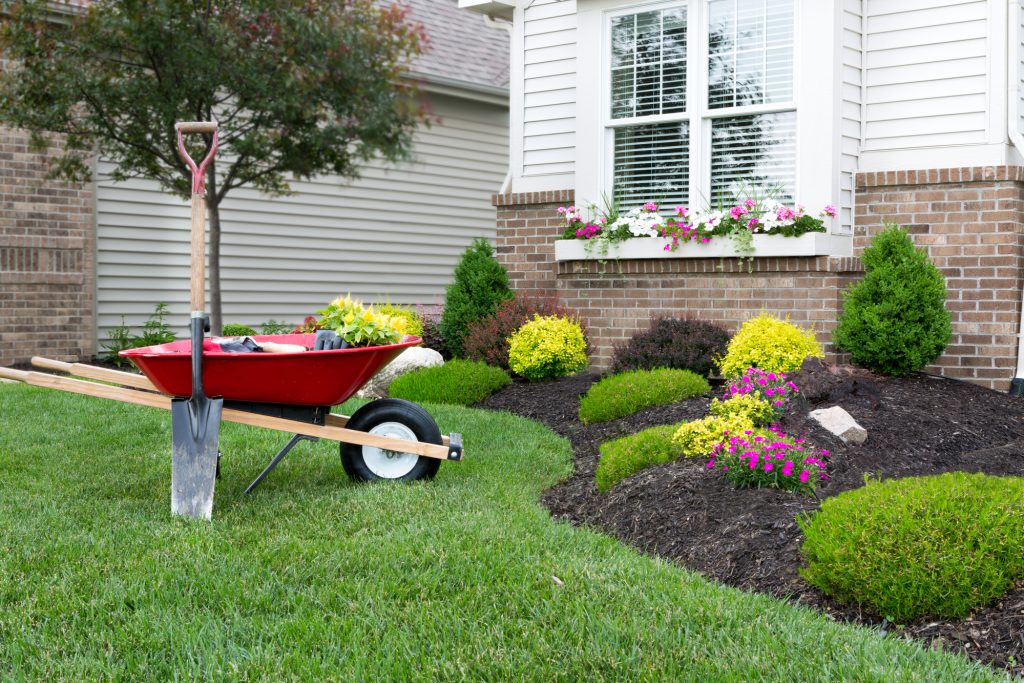A lush, green lawn serves as the perfect complement to any home, creating an inviting atmosphere that enhances your property’s appeal. However, maintaining that perfect balance between a thriving lawn and a pest-free environment can be challenging. This informative guide will help you achieve both goals while using sustainable and effective methods that work in harmony with nature.
Understanding Your Lawn’s Needs
The foundation of a healthy lawn lies in understanding its basic requirements. Your grass needs adequate sunlight, proper nutrients, and the right amount of water to thrive. Many homeowners overlook these fundamental elements, focusing instead on quick fixes that rarely provide long-term solutions. While regular maintenance can be managed independently, consulting a local lawn care company can help establish a customized care plan based on your specific soil type and climate conditions.
Proper watering techniques make a significant difference in lawn health. Water deeply but infrequently to encourage strong root growth. Early morning watering proves most effective, as it reduces evaporation and allows grass to dry before evening, preventing fungal growth. Consider installing a smart irrigation system that adjusts to weather conditions, ensuring your lawn receives precisely what it needs.
Natural Pest Prevention Starts with Healthy Soil
The secret to a pest-resistant lawn often lies beneath the surface. Healthy soil creates strong grass that naturally resists common pests and diseases. Regular soil testing helps you understand what amendments your lawn needs, allowing you to address deficiencies before they become problems.
Adding organic matter through composting enriches your soil while discouraging many common lawn pests. Soils with 5% organic matter hold up to 20 times more water than soils with 1%, making this a crucial factor in maintaining lawn health. This natural approach not only improves your lawn’s resilience but also creates an environment where beneficial insects thrive, helping to control harmful pest populations naturally.
Smart Mowing Practices

Your mowing routine significantly impacts both lawn health and pest control. Maintaining proper mowing height—typically between 2.5 to 3.5 inches—helps grass develop stronger roots and naturally shade out weeds. Sharp mower blades create clean cuts that heal quickly, reducing stress on grass plants and making them less susceptible to disease and pest invasion.
Leave grass clippings on your lawn when possible, as they decompose quickly and return valuable nutrients to the soil. This practice, known as grasscycling, reduces the need for additional fertilizer while improving soil structure.
Creating Natural Barriers Against Home Pests
While maintaining a healthy lawn, consider how your landscaping choices affect pest control around your home. Creating a buffer zone between your lawn and house foundation helps prevent many common household pests from finding their way inside.
Install a gravel or rock barrier extending at least 6 inches deep and 12 inches wide around your foundation. This simple step makes it harder for crawling insects to access your home while improving drainage around your foundation.
Integrated Pest Management Strategies
Adopting an integrated pest management approach allows you to address both lawn and household pest issues effectively. This method emphasizes prevention first, using chemical controls only as a last resort. Regular monitoring helps identify potential problems early, when they’re easier to manage through natural methods.
Common preventive measures include:
- Sealing entry points around windows, doors, and utility lines
- Maintaining proper drainage away from your home
- Removing standing water sources that attract pests
- Keeping tree branches and shrubs trimmed away from your house
Natural Pest Control Solutions
Many natural solutions effectively control both lawn and household pests without harsh chemicals. Beneficial nematodes help control grubs and other soil-dwelling insects that damage grass roots. Meanwhile, diatomaceous earth provides excellent protection against crawling insects around your home’s perimeter.
Essential oils like peppermint, citrus, and lavender not only repel many common household pests but also add pleasant natural fragrance to your home. These solutions prove particularly effective when combined with proper maintenance practices.
Seasonal Maintenance Calendar
Successful lawn care and pest control require year-round attention. Spring focuses on strengthening your lawn after winter dormancy, while summer emphasizes proper watering and monitoring for pest activity. Fall presents the perfect time for core aeration and overseeding, and winter allows you to focus on indoor pest prevention.
Following a seasonal maintenance calendar helps you stay ahead of potential problems while ensuring your lawn receives the care it needs at the right time. This proactive approach reduces the likelihood of severe pest infestations or lawn health issues developing. With the right plan, you can maintain your garden all year round and keep your outdoor space thriving no matter the season.
Sustainability Meets Effectiveness
Modern lawn care and pest control methods increasingly emphasize sustainability without sacrificing effectiveness. Using drought-resistant grass varieties reduces water requirements while maintaining appearance. Native plants in your landscape naturally resist local pests and support beneficial insects that help control harmful species.
Creating this balanced ecosystem around your home takes time, but the results prove worth the effort. A thriving lawn surrounded by appropriate landscaping looks beautiful and naturally resists pests, reducing the need for chemical interventions. If you want to take this a step further, greening your home with eco-conscious lawn and garden choices can boost curb appeal and environmental impact.
Remember that maintaining a green lawn and pest-free home requires patience and consistency. Focus on building healthy soil, using appropriate plant materials, and addressing issues promptly through natural methods whenever possible. This approach creates lasting results while promoting environmental health and reducing long-term maintenance costs.
0
Related
Read the full article here


